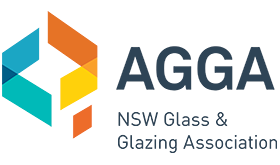|
Toughened glass, or "tempered glass", is a type of safety glass. It starts life as common annealed or float glass but is subjected to a controlled heat treatment. Any machining processes such as drilling or polishing must be carried out before the toughening process.
The toughening involves heating the glass in a specially designed furnace, and then it's rapidly cooled (quenched) using jets of air. The rapid cooling of the outside surface puts it in compression, while the inside remains in tension.This effectively increases the strength by a factor of 4 to 6.
The compressive forces on the outside of the glass make it harder for cracks to initiate, improving its strength. In glass, the time between crack initiation and failure can be almost instantaneous.
The extra strength makes the glass suitable for large window panes that are subject to wind loadings, such as those found in commercial buildings and apartment blocks. Other items such as balustrading and shower screens must be made from Grade A Safety Glass to Australian Standards.
The toughening process does not induce any noticeable change in appearance or dimensions of the glass.
Benefits of Toughened Glass
Safety increase
When toughened glass breaks, it shatters into small harmless particles, unlike annealed glass that will break into shards which are very dangerous.
Glass Toughening Standards
AS 2208 - Safety Glazing Materials in Buildings
AS/NZS 2080 - Safety Glazing for Land Vehicles
For more information visit the New South Wales Glass and Glazing Association (NSWGGA)
|





